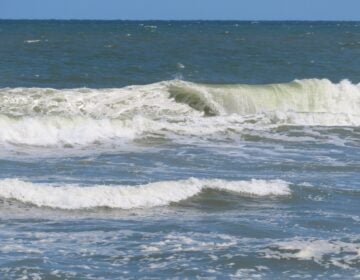Through painting, former Princeton resident Thibaud Thiercelin learning to become a child again
Being a parent gives adults license to play. In parenting Valentin, Thibaud Thiercelin finds the playful inspiration that pervades his canvases.
This is part of a series from Ilene Dube of The Artful Blogger.
Being a parent gives adults license to play. In parenting Valentin, Thibaud Thiercelin finds the playful inspiration that pervades his canvases.
Valentin is the center of Thiercelin’s universe. When Thiercelin and his wife, the artist Lisa Salamandra, learned that young Valentin had autism, they moved from a little village in France to Princeton, where they could seek the best treatment for him.
Salamandra, who was born in Trenton and grew up in Hamilton, knew of the high quality of care Eden Family of Services offered. For two years, the family, including Valentin’s younger brother, lived in Salamandra’s childhood home to learn the skills they needed to help Valentin.
During their time in central New Jersey, Thiercelin was artist-in-residence at the Arts Council of Princeton, and both he and Salamandra exhibited there. The family has since moved back to France and exhibit internationally. Inverted Minds, paintings by Thiercelin, is on view at Art Way Gallery in Plainsboro through July 22.
Thiercelin’s canvases are filled with magical realism. Self-taught, his simplistic, oil daubs on canvas depicts a figure clothed in a brick chimney, flying though a cloud filled sky with a contented mien (“Nomadic Wall”); a figure blowing bubbles into a tree (“Gerald”); a paint-splattered figure in “The Studio.”
Painting his way through understanding his son, Thiercelin learns to be a child again. “Valentin c’est moi.”
Before Valentin was diagnosed, “he was repeating everything we would say,” Salamandra told me several years ago. To teach Valentin his name, Thiercelin would say, “Valentin, it’s you,” pointing at his son.
“Valentin, it’s you,” Valentin would repeat.
And so Mr. Thiercelin would say, “Valentin, c’est moi.”
Thiercelin’s visionary art has a kind of “visual expression often associated with a sense of psychic immediacy, and often the subject matter, if there is any, has a childlike and naive quality in its rendering,” said Kate Somers, curator of the Bernstein Gallery at Princeton University’s Woodrow Wilson School, where Thiercelin’s work was exhibited.
There’s a childlike menace here too. In “Two Brothers,” toys in a boys’ playspace have become monsters, though friendly monsters. And in “Parade,” a bunny-like figure rides a tank.
“With the Salamanders” shows a figure — the artist? — bound up, floating in a swirling pink sky, as amphibian creatures swarm him. Does this refer to his family members, the Salamandras, or the lizard-like creatures that fascinate camp kids? Or are his family members, with their last name spelling slightly altered, the lizards, and he floats in their world, eventually becoming one?
Thiercelin builds up the surface by using the paint sculpturally, and he is often at the center of the swirls, drips, reflections of pinks, purples, turquoise and yellows in these autobiographical scenarios.
“Nomadic Bosch” may refer to the artist’s wanderings in New Jersey with a woman (Salamandra?) inside a brick tomb, as the artist floats overhead and two children play in the red room. There are objects shaped like rocket ships, and a cylinder with a large green cross.
It is as if Thiercelin lives in dreams awake, floating through this life with all its strange happenings, just riding the waves. In “The Barque,” two figures travel in a boat under a moonless sky. One of the figures in a striped shirt looks human enough, but the other seems to have a duck’s head with a yellow bill.
Curator Sheila Geisler has cleverly paired this work with the photographs of Leo Vayn, who also incorporates mysterious figures in his work. One, “Traces,” shows a Thiercelin painting (“Self-Portrait”) hanging on a wall, seen through glass that reflects an urban setting. Vayn uses dolls and small papier mache figures in his complex scenes — a tattooed white porcelain figurine nestled at the base of a boulder (“What Should I do Next?”); two tiny baby dolls floating together in a vast pool of cobalt blue (“Moment of Enjoyment”); a painted papier mache mask like a totem growing out of a banana tree (“Watcher”). He also finds faces and figures in driftwood, tree trunks and branches.
“While this series contains a great deal of intimate family portraits, the paintings allow the viewer to tap into their collective memory and go beyond the artist’s experience of the world,” says Geisler.
The Artful Blogger is written by Ilene Dube and offers a look inside the art world of the greater Princeton area. Ilene Dube is an award-winning arts writer and editor, as well as an artist, curator and activist for the arts.
WHYY is your source for fact-based, in-depth journalism and information. As a nonprofit organization, we rely on financial support from readers like you. Please give today.




